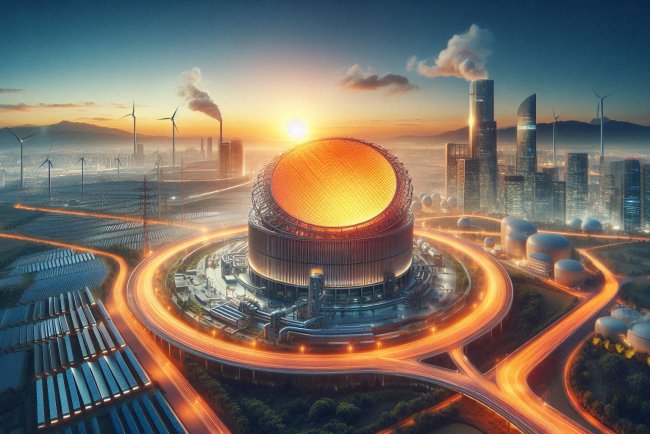Renewable Energy and the Circular Economy
"Explore the intersection of renewable energy and the circular economy, and discover how sustainable practices can shape a greener future. #renewableenergy #circulareconomy"

Renewable Energy and the Circular Economy
The concept of the circular economy has gained prominence in recent years as a sustainable alternative to the traditional linear economy. In a linear economy, resources are extracted, used, and disposed of, leading to environmental degradation and resource depletion. On the other hand, the circular economy aims to minimize waste and maximize the value of resources by promoting reuse, recycling, and regeneration.
Renewable energy plays a crucial role in advancing the circular economy by providing clean and sustainable energy sources that can be continuously replenished. Unlike fossil fuels, which are finite and contribute to greenhouse gas emissions, renewable energy sources such as solar, wind, and hydropower offer a more environmentally friendly alternative.
Key Benefits of Renewable Energy in the Circular Economy
1. Resource Conservation: Renewable energy sources are abundant and can be harnessed without depleting finite resources. By transitioning to renewable energy, we can reduce our reliance on non-renewable resources and promote sustainable resource management.
2. Waste Reduction: The production of renewable energy generates minimal waste compared to conventional energy sources. Solar panels and wind turbines have long lifespans and can be recycled at the end of their useful life, contributing to a more circular approach to energy production.
3. Energy Independence: Investing in renewable energy technologies allows countries to reduce their dependence on imported fossil fuels. By harnessing domestic sources of renewable energy, nations can enhance their energy security and resilience to supply chain disruptions.
4. Economic Growth: The transition to renewable energy creates new opportunities for job creation and economic growth. The renewable energy sector has the potential to generate millions of new jobs globally, supporting the development of a more sustainable and inclusive economy.
Integration of Renewable Energy and the Circular Economy
The integration of renewable energy and the circular economy involves designing energy systems that prioritize resource efficiency, waste reduction, and sustainable practices. Some key strategies for integrating renewable energy into the circular economy include:
1. Energy Storage: Implementing energy storage technologies such as batteries and pumped hydro storage can help optimize the use of renewable energy sources by storing excess energy for times of high demand. This enables a more reliable and resilient energy system while reducing waste and maximizing resource utilization.
2. Smart Grids: The development of smart grids that incorporate renewable energy sources and advanced monitoring systems can improve the efficiency and flexibility of energy distribution. By optimizing energy flows and reducing transmission losses, smart grids contribute to a more sustainable and circular energy system.
3. Circular Design: Embracing circular design principles in the development of renewable energy technologies can enhance their sustainability and recyclability. Designing products with the end-of-life in mind, such as facilitating easy disassembly and recycling, can reduce waste and promote a more circular approach to energy production.
Challenges and Opportunities
While the integration of renewable energy and the circular economy offers significant benefits, there are also challenges that need to be addressed. Some of the key challenges include:
1. Infrastructure Requirements: The transition to a more circular energy system requires significant investments in infrastructure and technology upgrades. Building a renewable energy infrastructure that supports a circular economy may require upfront costs and long-term planning.
2. Policy and Regulatory Frameworks: Effective policies and regulations are essential to support the integration of renewable energy and the circular economy. Governments need to create incentives and frameworks that promote sustainable energy practices and circular business models.
3. Consumer Behavior: Shifting consumer behavior towards more sustainable choices and products is crucial for the success of the circular economy. Educating consumers about the benefits of renewable energy and promoting energy efficiency can help drive the adoption of circular practices.
Despite these challenges, the integration of renewable energy and the circular economy presents significant opportunities for innovation, sustainability, and economic growth. By leveraging renewable energy sources and adopting circular principles, we can create a more resilient and sustainable energy system that benefits both people and the planet.
Conclusion
Renewable energy and the circular economy are interconnected concepts that offer a pathway towards a more sustainable and resilient future. By harnessing renewable energy sources and embracing circular principles, we can reduce waste, conserve resources, and mitigate the impacts of climate change. The integration of renewable energy and the circular economy represents a holistic approach to energy production and consumption that prioritizes environmental steward
What's Your Reaction?

















